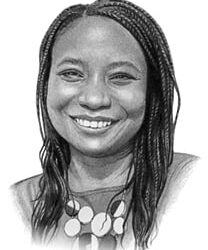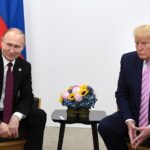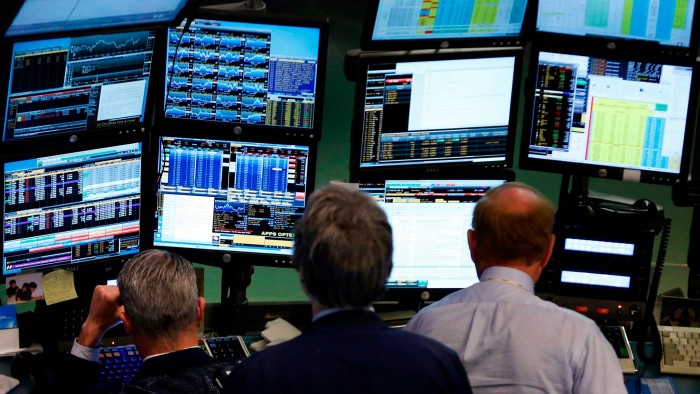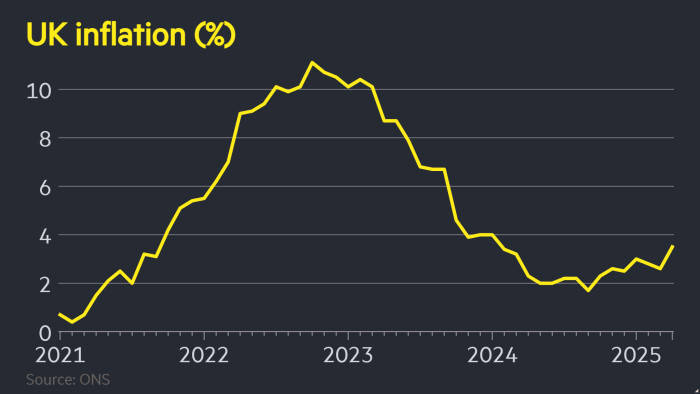Inside China’s ‘stolen iPhone building’
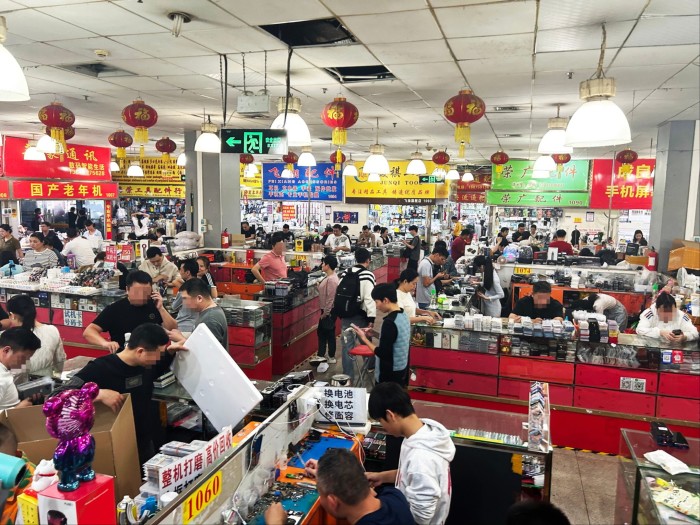
In any other neighbourhood, the Feiyang Times building, a drab grey-and-brown tower in southern China, would be most notable for the gaudy, propaganda-plastered columns that line its forecourt.
But like many of the electronics markets in the labyrinthine malls of Huaqiangbei, the fourth floor of the building has its own specialism: selling second hand iPhones from Europe and the US.
Many of the phones sold here are legitimate trade-ins, returned by western consumers to network operators or phone shops when upgrading to the latest models.
But the tower also sits at a location that Apple community message boards, social media commenters and victims of phone theft have identified as China’s “stolen iPhone building”.
It is one of the most important nodes in a supply chain for second hand technology that starts in the west, travels through wholesalers in Hong Kong, and on to markets in mainland China and the global south.
Sam Amrani, a tech entrepreneur, had just finished work in Kensington, London and was typing a message on WhatsApp when two men riding electric bicycles appeared on either side of him and snatched his four-month-old iPhone 15 Pro.
Amrani, whose company pass_by provides geospatial analysis to retail businesses, took a particular interest in the phone’s journey, tracking it to an independent repair shop behind Marylebone station and via several other locations across London.
After a week, he awoke in the night to see it ping briefly at an address in Kowloon, Hong Kong, and later settling in the Huaqiangbei district of Shenzhen.
“It was very quick, very organised and kind of targeted,” he said, adding that after posting about his experience on LinkedIn he discovered how many others had similar experiences.
Online message boards complaining of stolen phones emerging in Shenzhen identify a range of locations in the city. Nearly all of them are either in the Huaqiangbei area, or near the city’s border posts with Hong Kong.
The UK’s metropolitan police warned in February that phone theft in London was a £50mn-a-year industry. The force seized 1,000 stolen devices and made 230 arrests in one week as part of an “intensifying clampdown”. Officials in Paris and New York have also reported rises in phone snatching.
Huaqiangbei traders say the reason second hand phones end up in Shenzhen is because they can find buyers for every component of a device in the area’s various markets, from screens and circuit boards to chips and copper. There are even traders who will buy up unwanted excess plastic, which can be melted down for use in bottles.
That means that even phones remotely locked by users in the west can be stripped down into parts and sold at a small profit, they say.
The Feiyang tower is not the only mall in the district selling second hand phones. Huaqiang Electronics World, Yuanwang Digital Mall and hundreds of hole-in-the-wall shops lining the streets of the 3 sq km area all advertise recycled phones.
But Feiyang is the one most heavily focused on selling overseas models, according to traders. These have two main attractions over Chinese iPhones: access to global app stores and, in the case of US phones restricted to using SIM cards from specific networks, cheaper prices.
The tower’s iPhone-selling third and fourth floors come to life in the late afternoon and into the night. Traders from mainland China, Hong Kong, and much of the global south flock to its cramped glass stalls to haggle over wholesale batches of iPhones in various models and states of repair.

“Have a look around,” said Wang, an iPhone seller at Feiyang with spiky hair and acid-wash jeans who wished to be identified by his surname. “There are all kinds [of phones].”
That likely included phones lost in western countries, he said, adding that even those remotely locked or with uncrackable passcodes had their “market price”.
Most other sellers are reticent on the provenance of their wares. Six sellers told the Financial Times they did not know how the US iPhones advertised in the glass booths in front of them got there.
Bilal Khan, a trader from Pakistan hoping to buy 300 iPhones, said he was specifically seeking SIM-locked US phones, which were subject to lower import duties in his home market. Customers in Pakistan used the phones for their cameras, WiFi and gaming functions, rather than mobile data and calling services, he added.
Munir, another trader who did not want to be identified by his full name, said he was looking to buy 100 to 200 iPhone 13 Pro Maxs, which he could sell on for a profit of about $70 per phone in his home market of Libya.
But traders on the second floor of the Feiyang mall, who specialise in selling iPhone components, said they bought many of those parts from the sellers on the floors above, especially when they were unable to unlock them themselves.

“If they have a passcode . . . there’s no way of selling it,” said Hu, a trader in his 40s whose stall purveys iPhone screens and did not want to be identified by his full name. “We have no way of knowing the [phones’] origins.”
Tongtiandi Communication Market, which operates the Feiyang mall, did not respond to an emailed request for comment. When the FT visited its management office in the building, two men declined to provide names or contact methods.
When asked if phones stolen overseas were sold on the premises, one responded that the vendors were “private” sellers. “What they sell is their business, you should ask them yourself,” he said. “We don’t need to answer your questions”.
One thing most sellers agree on is that the vast majority of overseas phones sold in Shenzhen arrived in the city via Hong Kong, where hundreds of second-hand device wholesalers are based, many of them in a single industrial building in Kwun Tong.
Phone traders from Shenzhen make the short trip to 1 Hung To Road to view wholesale lots of phones, before buying them in online auctions and bringing them to Huaqiangbei to either sell on whole or strip into parts.
Here, several companies openly advertise both the buying and selling of lots with labels such as “iCloud locked” on apps, as well as on WeChat, Facebook and WhatsApp.
Hong Kong’s status as a free trade port with no import or export taxes and a simple customs system makes it an essential step in the supply chain, helping traders avoid the heavy import taxes levied on electronics in the mainland.

When the FT visited the Kwun Tong wholesalers, merchants from around the world — including China, the Philippines and Turkey — were purveying the devices on offer.
Dozens of electronics wholesalers were crammed into small, carpeted side offices around a series of central elevators in the 31-storey industrial building.
Inside, buyers pick through cardboard boxes full of bubble-wrapped iPhones, questioning staff on their provenance, state of repair and available quantity before later placing bids at auctions conducted daily through WhatsApp and other apps.
In one office, boxes containing iPhones were marked “Has ID” and “No ID”, which traders confirmed differentiated between phones that were remotely locked through the Find My app.
The Hong Kong police said it “will take appropriate actions where necessary according to actual circumstances and in accordance with the law”. Chinachem Group, the developer of the Hung To Road property, declined to comment. The Shenzhen government did not respond to a request for comment.
Kevin Li, a phone seller visiting the Kwun Tong building from Shenzhen who asked to be identified by an English first name, explained that making a profit on phones sold with IDs depended on purchasing them at a cheap enough price, which he said was about 70 per cent less than unlocked phones.
The phones could then be broken down into parts and sold in Shenzhen at a small profit.

“The ID ones were probably stolen or snatched in the US. They are sold to Hong Kong and then on to other countries including the Middle East,” he said.
For small batches, traders will carry the phones over the border in their hand luggage but larger batches required “specialised logistics companies”, he added.
Other methods for avoiding Chinese taxes on electronics include hiding them in cross-border passenger cars or “co-operating with smugglers”, according to advertisements on Chinese social media.
Li insisted there was no way for phone sellers to force their way into passcode-locked devices. But posts on western social media show that many who have their phones stolen receive messages from individuals in Shenzhen either cajoling them or threatening them to remotely wipe their devices and remove them from the FindMy app.
“For devices that have IDs, there aren’t that many places that have demand for them,” says Li, finishing his cigarette break. “In Shenzhen, there is demand . . . it’s a massive market.”

